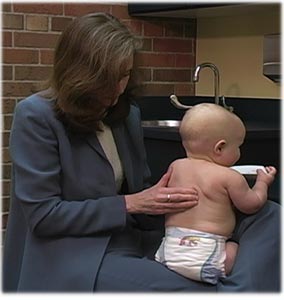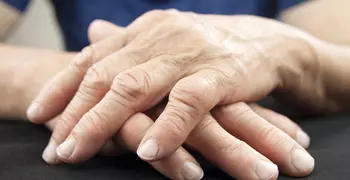What Does the Research Say?
Unlike conventional medicine, chiropractic does not use implantable medical devices or pharmaceutical drugs, so it has not received research funding from device or pharmaceutical companies.
Despite this, the chiropractic profession has conducted clinical research throughout its history. Most chiropractic colleges have self-funded their research programs with support from chiropractic foundations. Federal support for chiropractic research began in 1992 with the establishment of the National Center for Complementary and Integrative Health (NCCIH) of the National Institutes of Health.
When is chiropractic treatment effective?
The majority of clinical research in chiropractic has focused on its effectiveness in caring for spine-related injuries and complications from spinal stress. The studies usually compare a typical chiropractic regimen with commonly utilized pharmaceuticals, or combinations of therapies. Any lasting effects of treatment are measured over time.
The major studies have found clinical benefit of spinal manipulative therapy in cases of:
low back pain
neck pain
headache
Here are three examples of analyses of pools of research:
- Chaibi, A., Russell, M.B. (2012). Manual therapies for cervicogenic headache: A systematic review. Journal of Headache and Pain; 13(5):351–9.
- Gross, A., Langevin, P., Burnie, S.J., Bédard-Brochu, M.S., Empey, B., Dugas, E., et al. (2015). Manipulation and mobilisation for neck pain contrasted against an inactive control or another active treatment. Cochrane Database Syst Rev; (9):CD004249.
- Sutton, D.A., Côté, P., Wong, J.J., Varatharajan, S., Randhawa, K.A., Yu, H., et al. (2016). Is multimodal care effective for the management of patients with whiplash-associated disorders or neck pain and associated disorders? A systematic review by the Ontario Protocol for Traffic Injury Management (OPTIMa) Collaboration. Spine J; 16(12):1541-1565.
 When is chiropractic treatment not effective?
When is chiropractic treatment not effective?
While the research is generally favorable for musculoskeletal conditions, there are fewer clinical trials assessing non-musculoskeletal conditions, and the results have been less favorable. Asthma and infantile colic are two such conditions.
Interestingly, individuals with asthma and infantile colic have shown improvement with spinal manipulative therapy, a finding which is consistent with reports from clinicians and patients. However, studies show the improvements could not be attributed to the SMT. It is possible that other factors (like touch) could account for the perceived improvements.
What about studies on the preventive effects of chiropractic?
It is far easier to study chiropractic as a treatment than as an approach to wellness. When a patient has a specific complaint that can be measured by level of pain or certain limitations, different interventions can be compared in their ability to affect changes. But how does one measure wellness?
This is one of the elusive issues in research. What should the measures be and how does one control for the confounding effects of daily living? The currently accepted standard of sound clinical research is the randomized controlled trial, but in order to study wellness, other approaches will need to be devised and validated. Because of these issues, there is little research on the preventive effects of chiropractic.
Where can I get more information about research?
To find studies on the use of chiropractic and other alternative approaches, such as acupuncture for specific conditions, a good place to start is PubMed, using both the word chiropractic and the name of the condition in your search. ClinicalTrials.gov, the National Institutes of Health website devoted to current clinical trials, lists several chiropractic trials that are currently recruiting patients for major studies.
Balon, J., Aker, P.D., Crowther, E.R., Danielson, C., Cox, P.G., O’Shaughnessy, D., et al. (1998). A comparison of active and simulated chiropractic manipulation as adjunctive treatment for childhood asthma. N Engl J Med; 339:1013-1020.
Biller, J., Sacco, R.L., Albuquerque, F.C., Demaerschalk, B.M., Fayad, P., Long, P.H., et al. American Heart Association Stroke Council. (2014). Cervical arterial dissections and association with cervical manipulative therapy: a statement for healthcare professionals from the American Heart Association/American Stroke Association. Stroke; 45(10):3155-74.
Bronfort, G., Haas, M., Evans, R., Leininger, B., Triano, J. (2010). Effectiveness of manual therapies: The UK evidence report. Chiropr Osteopat; 18:3.
Bronfort, G., Evans, R., Anderson, A.V., Svendsen, K.H., Bracha, Y., Grimm, R.H. (2012). Spinal manipulation, medication, or home exercise with advice for acute and subacute neck pain: A randomized trial. Ann Intern Med; 156(1 Pt 1):1-10.
Carnes, D., Mars, T.S., Mullinger, B., Froud, R., Underwood, M. (2010). Adverse events and manual therapy: A systematic review. Man Ther; 15(4):355-63.
Cassidy, J.D., Boyle, E., Cote, P., He, Y., Hogg-Johnson, S., Silver, F., et al. (2008). Risk of vertebrobasilar stroke and chiropractic care: Results of a population based case-control and case-crossover study. Spine; 33:S176-S183.
Cassidy, J.D., Boyle, E., Côté, P., Hogg-Johnson, S., Bondy, S.J., Haldeman, S. (2016). Risk of carotid stroke after chiropractic care: A population-based case-crossover study. J Stroke Cerebrovasc Dis; pii: S1052-3057(16)30434-7.
Castien, R.F., van der Windt, D.A., Grooten, A., Dekker, J. (2011). Effectiveness of manual therapy for chronic tension-type headache: A pragmatic, randomised, clinical trial. Cephalalgia; 31(2):133-43.
Chaibi, A., Russell, M.B. (2012). Manual therapies for cervicogenic headache: A systematic review. Journal of Headache and Pain; 13(5):351–9.
Chaibi, A., Tuchin, P.J., Russell, M.B. (2011). Manual therapies for migraine: A systematic review. Journal of Headache and Pain; 12(2):127–33.
Clar, C., Tsertsvadze, A., Court, R., Hundt, G.L., Clarke, A., Sutcliffe, P. (2014). Clinical effectiveness of manual therapy for the management of musculoskeletal and non-musculoskeletal conditions: Systematic review and update of UK evidence report. Chiropr Man Therap; 22(1):12.
Chou, R., Deyo, R., Friedly, J., Skelly, A., Hashimoto, R., Weimer, M., et al. (2016). Noninvasive treatments for low back pain [Internet]. Rockville (MD): Agency for Healthcare Research and Quality (US). Available from http://www.ncbi.nlm.nih.gov/books/NBK350276/
Goldstein, M. (1975). The research status of spinal manipulative therapy: A workshop held at the National Institutes of Health, February 2-4, 1975. Bethesda MD: DHEW Publication No. (NIH) 76-998.
Gross, A., Langevin, P., Burnie, S.J., Bédard-Brochu, M.S., Empey, B., Dugas, E., et al. (2015). Manipulation and mobilisation for neck pain contrasted against an inactive control or another active treatment. Cochrane Database Syst Rev; (9):CD004249.
Haldeman, S., Carey, P., Townsend, M., Papadopoulos, C. (2001). Arterial dissections following cervical manipulation: The chiropractic experience. CMAJ; 165:905-906.
Luedtke, K., Allers, A., Schulte, L.H., May, A. (2015). Efficacy of interventions used by physiotherapists for patients with headache and migraine: Systematic review and meta-analysis. Cephalalgia; 36(5):474-92.
Mesa-Jimenez, J.A., Lozano-Lopez, C., Angulo-Diaz-Parreno, S., Rodriguez-Fernandez, A.L., De-la-Hoz-Aizpurua, J.L., Fernandez-de-Las-Penas, C. (2015). Multimodal manual therapy vs. pharmacological care for management of tension type headache: A meta-analysis of randomized trials. Cephalalgia; 35(14):1323–32.
Michaeli, A. (1993). A reported occurrence and nature of complications following manipulative physiotherapy in South Afrika. Aust Physiother; 39:309-315.
Michaleff, Z.A., Lin, C.W., Maher, C.G., van Tulder, M.W. (2012). Spinal manipulation epidemiology: Systematic review of cost effectiveness studies. J Electromyogr Kinesiolt; 22(5):655-62.
Nielsen, N.H., Bronfort, G., Bendix, T., Madsen, F., Weeke, B. (1995). Chronic asthma and chiropractic spinal manipulation: A randomized clinical trial. Clin Exp Allergy; 25:80-88.
Olafsdottir, E., Forshei, S., Fluge, G., Markestad, T. (2001). Randomised controlled trial of infantile colic treated with chiropractic spinal manipulation. Arch Dis Child; 84:138-141.
Sutton, D.A., Côté, P., Wong, J.J., Varatharajan, S., Randhawa, K.A., Yu, H., et al. (2016). Is multimodal care effective for the management of patients with whiplash-associated disorders or neck pain and associated disorders? A systematic review by the Ontario Protocol for Traffic Injury Management (OPTIMa) Collaboration. Spine J; 16(12):1541-1565.
Tsertsvadze, A., Clar, C., Court, R., Clarke, A., Mistry, H., Sutcliffe. P. (2014). Cost-effectiveness of manual therapy for the management of musculoskeletal conditions: A systematic review and narrative synthesis of evidence from randomized controlled trials. J Manipulative Physiol Ther; 37(6):343-62.
UK BEAM Trial Team. (2004). United Kingdom back pain exercise and manipulation (UK BEAM) randomised trial: Effectiveness of physical treatments for back pain in primary care. BMJ; 329(7479):1377.

